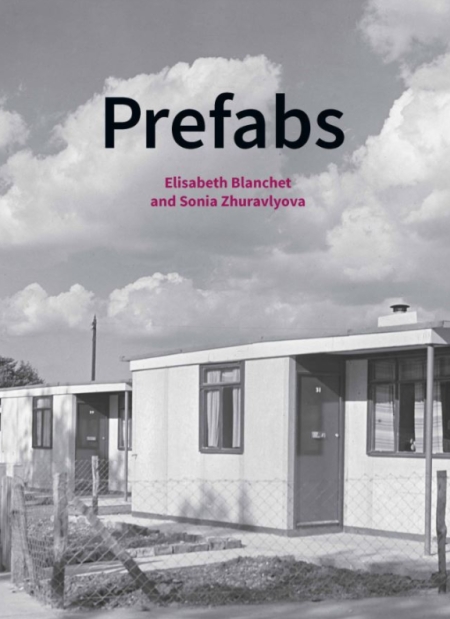Prefab bungalows

|
| Prefabs, Elisabeth Blanchet and Sonia Zhuravlyova, Historic England, 2018, 115 pages, 54 colour and 38 black and white illustrations. |
For a relatively short time in the post-war decades prefab bungalows were a familiar building type in towns and cities up and down the country. The foreword to this book by the former Labour Party leader Neil Kinnock shows that prefabs were often also a step up in living standards for the people who moved into them and that they offered a chance for residents to progress in life. We later find that Admiral Lord Alan West spent his childhood years in a prefab. Other prefab residents emerge as engaging personalities fiercely attached to their homes.
The authors trace the origins of prefabs in plotland developments and in early experiments in the later 19th and early 20th centuries such as ‘homes fit for heroes’ after the first world war. The book cites examples from the USA as well as the UK. Prefabs came into their own, however, as an answer to an acute housing shortage after the second world war. The book charts the various types of prefab systems, some of which, such as the AIROH house, developed to exploit surplus manufacturing capacity in aircraft factories. Other prefabricated systems developed by companies such as Wates, or, in the case of housing in the Scottish islands, imported from Sweden, provided longer-life houses.
The book diverges into consideration of prefabricated systems in high-rise housing, and their role in future housing provision and in emergency housing. Significant as those subjects are, these chapters loosen the overall coherence of the theme of the book. Finally, the authors describe campaigns by residents to save prefab bungalows, and the preservation, listing and improvement of prefabs. An appendix lists the various prefab systems used in the post-war decades.
Prefab bungalows are now a rare building type, so the value of the book for conservation is limited. They are, however, significant in the history of housing and planning in the UK. Perhaps the key contemporary message of the book is that decent housing is a vital component of individual advance and social progress.
This article originally appeared as ‘A step up’ in IHBC's Context 158 (Page 61), published in March 2019. It was written by Michael Taylor, editorial coordinator for Context.
--Institute of Historic Building Conservation
Related articles on Designing Buildings Wiki
- Architectural styles.
- British post-war mass housing.
- Conservation.
- Historic building.
- Housing Defects Act 1984.
- IHBC articles.
- Kit house.
- Modern methods of construction.
- Modular buildings.
- Off-site construction.
- Offsite manufacturing.
- Plug and play skyscrapers.
- Prefabrication.
- Ronan Point.
- Types of building.
- Y:Cube development in Mitcham.
IHBC NewsBlog
Images from inside a Grade II listed hotel show the scale of its collapse
The Corbett Arms in Tywyn has fallen into serious disrepair.
Old Sarum fire in listed (& disputed) WW1 Hangar - Wiltshire Council has sought legal advice after fire engulfed a listed First World War hangar that was embroiled in a lengthy planning dispute.
UK Antarctic Heritage Trust launches ‘Virtual Visit’ website area
The Trust calls on people to 'Immerse yourself in our heritage – Making Antarctica Accessible'
Southend Council pledge to force Kursaal owners to maintain building
The Council has pledged to use ‘every tool in the toolbox’ if urgent repairs are not carried out.
HE’s Research Magazine publishes a major study of the heritage of England’s suburbs
The article traces the long evolution of an internal programme to research 200 years of suburban growth
IHBC Context 183 Wellbeing and Heritage published
The issue explores issues at the intersection of heritage and wellbeing.
SAVE celebrates 50 years of campaigning 1975-2025
SAVE Britain’s Heritage has announced events across the country to celebrate bringing new life to remarkable buildings.
IHBC Annual School 2025 - Shrewsbury 12-14 June
Themed Heritage in Context – Value: Plan: Change, join in-person or online.
200th Anniversary Celebration of the Modern Railway Planned
The Stockton & Darlington Railway opened on September 27, 1825.
Competence Framework Launched for Sustainability in the Built Environment
The Construction Industry Council (CIC) and the Edge have jointly published the framework.














